It’s obvious that what to pack for your travel will depend on your travel destiny: cold, hot, mountains, city, country, beach, more “well-dressed” or more “relaxed.” However, there are always some basic clothing and accessories that you will need, remembering that you will have to carry everything that you bring on your back. So, less is better. If you are a newbie check out this guide for beginner backpackers to learn the essentials
That’s it, in a lot of your travel pictures you will show up wearing the same clothes….that’s life!! You can’t take your whole wardrobe on your back!!
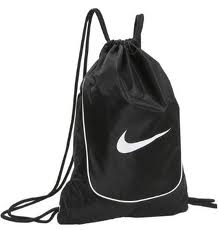
One time I asked for a lift in the back of a pick-up truck in Thailand and on it there was an old guy from Finland, a veteran backpacker, who told me how much Thailand had changed over the years as a place that in the past only had “hardcore” backpackers and was now filled with Samsonites. Or, in other words, he was upset that it was now filled with “backpackers” that were traveling with wheeled suitcases.
To be honest, if you are going to travel in Europe and just in cities, a wheeled suitcase will not be the end of the world. It fits many things and you won’t have to carry all that weight on your back. But, if you are going to Indonesia and traveling by fishing boats and will be doing lots of walking or hiking in the mountains and sleeping in sleeping bags, a backpack is essential!!! For example, this great article here has nice Bali packing list to organize you backpack to Indonesia.
However, if you are going to travel around Southeast Asia in general, a would recommend this great article with the ultimate Southeast Asia packing list for beginners.
So, here is a list of different things to bring separated into sections with explanations:
- Clothing:
I know that packing for women can be a completely different world than packing for men so I’m going to have the audacity to venture an opinion on this… but my girlfriend promises to do an article on packing for ladies in the future. However, I still think that some of the advice below can also be used by females. I am not really a guy that worries too much about clothing so please excuse me if this list seems rather boring. To begin to prepare my backpack, I like to start looking from the bottom to the top:
- A tennis shoe or hiking boot for the day. As I like to run and always bring tennis shoes that I also use to hike, I have never had problems. But if you have the intention to hike the Mt. Kilimanjaro, a real hiking boat would be more appropriate!! Sometimes a second pair is useful if you are going to a place that is always wet and you need to dry your first pair. Or, the second pair could be something a bit nicer so you don’t get denied entry to nightclubs (this happened to me in San Salvador and in a few other places….including Kentucky!!);
- Flip flops. These are also essential, especially if you are going to the beach, but are also good if you are going to use hostel showers… I have seen some hostel showers that resemble a pit of hell and would probably make my foot fall off if it touched it;
- Undergarments and socks. I like to bring A LOT of socks and underwear because, although I know many people that try their best to “extend” the length that they can wear these, I try, as much as possible, to change these two items each day. If you are going to the beach, of course you can take fewer socks;
- Pants. In general, I bring one pair for walking and hiking, one pair of jeans for evenings if you are going to cities, and a pair of sweatpants if it is cold or to sleep/chill out in the hostel;
- Board or Bermuda shorts. If it is going to be warm, you can bring however many you think will be necessary depending on the length of the trip and remembering these are easy to wash by hand in the shower;
- Shirts. Just like with socks and underwear, I try to change t-shirts almost every day. If I am somewhere cold and I don’t sweat, I can re-use them. The quantity, once again, depends on how much you are willing to carry on your back and on the length of your trip. I always bring one or 2 nice shirts in case I want to go out at night;
- Sweaters or sweatshirts. If it’ll be cold, around 2 or 3. Even if you going somewhere warm like South East Asia, it is good to bring one. In these regions, some buses have really strong air conditioning. My last experience with this was in the Dominican Republic… a hot country where I almost froze on a 5 hour bus ride. Another reason to bring a sweatshirt, especially one with a hood, is that they make great pillows for long train, bus, or plane rides… and are also useful to block out light when trying to sleep;
- Some type of raincoat. This is good for various situations but, if you going to South East Asia during Monsoon season and forgot, it is even better to have a rain cover for your backpack because you are going to get soaked anyways… and then use a big garbage bag with a head hole for your body;
- Winter jacket. If you are going to Canada, Scandinavia, or any other place like this during the winter, forget about that cheap jacket that you bought on eBay from China!! It is only going to help you prolong the arrival of hypothermia…but it will still arrive. You can pile on a mountain of clothing until you look like a marshmallow, but it’ll be uncomfortable and then you’ll have a mountain of clothing to wash. In conclusion, if you don’t have adequate attire in a region where the wind chill can reach -40 C and you can’t find a shelter anywhere, you die!!! Therefore, bring a good jacket, scarf, gloves, hat, and thermal pants to wear underneath your normal pants… and wool socks also help;
- For your head, a hat if it is cold or a baseball cap if it is warm. I know that there is this whole style thing where people have 15 baseball hats and change them each day, but that’s up to you. On the other hand, there are people that can’t stand them but, just remember, if you are hiking in the mountains underneath a strong sun, a cap is essential. For the cold, depending on how low the temperature is, if your head is uncovered you can get frostbite on your ears, literally!!
- Sunglasses. They say if you are outside and there isn’t a lot of sun but you still see someone wearing sunglasses, it’s because they are probably Brazilian. Well, to speak honestly I have tested this theory and it is kind of true… just catch a flight going from Brazil’s two largest cities, Sao Paulo and Rio, and you’ll see people wearing sunglasses…on the plane, go figure. Personally, I always have sunglasses handy to keep my eyes protected;
- Scarf. Or something to protect your neck in case it’s very cold;
- Towel. To save space, one of those microfiber towels that dry faster and are compact to handle….. or just take a normal one from your mother….
- Toiletries:
Without wanting to be sexist, the difference between men and women when it comes to toiletries is even more glaring than when it comes to clothing. So, I will discuss what I, as a man, like to bring. Remembering that the idea is to pack minimally without sacrificing personal hygiene. I know that some of the things on this list seem obvious, but I have been asked by others to borrow so many different basic things during my trips, that a reminder never hurts.
- Shampoo. The best if is you have several small bottles like those you get from hotels. Otherwise, you can buy small, empty containers and fill them up with your own shampoo and you can always buy more if you need to. You don’t want to carry a huge bottle of 750 ml of shampoo for you whole trip if you can avoid it;
- Liquid body wash. You can do the same with this as with the shampoo and it is much easier to bring this in liquid form than bring a small, wet piece of bar soap.;
- Deodorant.… please!!
- Toothbrush and toothpaste. It also helps if the toothpaste is one of those mini ones. ;
- Nail clippers. You can lend or borrow nail clippers but as this can be a little weird, it’s better to have your own;
- A handful of cotton swabs just in case;
- Sunscreen. Essential if you are going to the beach;
- Sunscreen. Essential if you are going to the mountains;
- Sunscreen. Essential if you are going to Australia or for every other day of your life;
- Chapstick. Essential if you are going somewhere cold;
- Cologne. It’s not necessarily an obligatory item if you are going to do something like traverse the Sahara desert, but you never know if you might find a nightclub around….;
- Baby powder. A good idea if you are going to use the same shoes for 4 months and don’t want to kill your roommates;
- Razors and shaving cream;
- Tweezers. They are good for removing a thorn from the skin, taking out a sliver of wood from the finger, pulling that cord that is stuck in your shorts, and even your eyebrows if that’s for you!!
- Condoms. Bring these if you are feeling optimistic… it’s better to be safe than sorry.
Also, when traveling, remember to travel with your favorite perfume to ensure you feel refreshed and confident throughout your journey and carry a touch of home and confidence wherever you go.
TIP: Try to put everything that is liquid from the list above in a sealable plastic bag so your clothing doesn’t get covered with shampoo if the bottle explodes in your luggage.
- First aid, medicines, and vaccines:
These items are going to depend on whether you plan to backpack in cities or in places, like the mountains, country, beach, forest, etc., where the closest pharmacy is many kilometers away. However, there are a couple of items that I always bring with me:
- Band-aid. Always good….;
- I’m not really much into taking medicines, so I’m not sure what to say here. Maybe something for headaches (thanks to that hangover) and something for your stomach in case you decided to try some cheap street vendor food. One of the major causes of being “stuck in bed” for travelers is intestinal infections. Or, AKA, the shits!!
- Something that I never forget and I advise you to bring with you are vitamins!! Backpacking is really demanding on your body. You sleep badly, many times on a bus or on an airport floor, party a lot, don’t always eat well, walk a ton carrying something heavy on your back, etc… Because of this, we ask a lot of our bodies and our immune systems are lowered, leaving us more susceptible to diseases. To try to avoid this, I always backpack with a multivitamin that has vitamin C to strengthen my immune system so I don’t have to spend a wonderful beach day in bed or worse, miss that excursion that I already paid for;
- Mosquito spray. Essential in tropical areas where malaria or other diseases might be present;
- Motion sickness pills. Normally I do not use them but I know many people who get sick during boat trips, which can invariably occur on your trip. It can also be useful for car, bus or train trips on winding roads, or even during flights;
- Vaseline. Or some other cream to put on your body on parts that might get “chafed” with lots of walking;
- If you are taking any type of medications, be sure to talk to your doctor to get a supply to cover all of your trip because it can be complicated to get prescriptions filled in foreign pharmacies.
If you are going backpacking in areas far from the city like the countryside, forest, mountains, etc… a good first aid kit is indispensable. You can buy already prepared kits or you can prepare your own according to exactly what you might need for the location that you are going to.
- Vaccines:
Different countries require different vaccines. I keep my proof of the yellow fever vaccine stapled to my passport at all times. Normally, this is the vaccine that is most likely to be required by immigration agents around the world. It is valid for 10 years and is usually free or very cheap, depending on where you are from. Check with your doctor to see if you will need it on your trip. If you are going to a region with tropical rainforests, particularly in South America or Africa, it is a great idea to bring malaria pills. These are not 100% effective but anything is better than nothing. Just be warned, they can cause some pretty weird side effects. Again, check with your doctor to see if you need them. Also be sure to use mosquito spray on your whole body, wear long sleeves, and sleep with a mosquito net around your bed.
TIP 2: Check and see if there is any kind of traveler’s clinic in your city. Basically, here you can have a quick “interview” with a doctor to see where you are going and to check your health and what vaccinations you already have. Based on this information, they will tell you about health care during your trip, give you any vaccinations that you might be missing, and writing you any prescriptions that might be useful to take during your trip. Depending on where you are from, this service is free.
- Miscellaneous:
- Camera!! This the number one item for almost all travelers. Just don’t forgot the battery charger and take enough memory for your trip;
- Laptop. For most trips, I bring my laptop. It’s really practical for making hostel reservations, looking up information about transportation, staying in contact with your family, updating yourself on the state of the world, watching a movie at night to relax, etc… Additionally, I suggest protecting your laptop with a sturdy Faraday laptop case to prevent damage and safeguard your data and privacy. Currently, almost every hostel in the world has free Wi-Fi that you can use on your laptop for as much time as you’d like. If you choose not to bring your computer (because sometimes it can be nice to be a bit disconnected from the world), you can use the hostel computers if they have them… although sometimes they charge for them. However, if the hostel does have free computers, you might not always find an available one. Frequently, there are massive lines to use as, being quite old, they tend to be quite slow and not always have all the programs or are simply broken. Another option is to go to an internet cafe. But they can be inconvenient to find (or almost impossible in places like The United States) and, if you are in an expensive country, might have costly rates;
Universal adaptor. This is really useful on a trip around the world where you will find different formats in each area. To avoid taking a bunch of cords and chargers, I bring a “kit” of three items that cover 99% of my charger requirements for cell phones, Pads, cameras, Ipods, and anything else that you might imagine. This “kit” consists of a universal energy adaptor, a USB power adaptor, a USB Multi cable adaptor that comes with a bunch of different cords with different ends for different gadgets. Therefore, rain or shine, I can charge any electronic device that I might need to and even help out fellow travelers who might not have been as prepared as you. You can find the Universal adaptor and the USB Multi cable on Amazon at these link / link and apparently they deliver to most countries in the world. You can also buy these items at Ebay; the Universal adaptor here and the USB Multi cable here. Finally, you can find Universal adaptor on REI too, which is the best in my opinion, since it’s a nicer and smaller company, focused on outdoor gear;
- Flash drive/memory stick. This is useful to save the excess of photos from your camera as a backup in case your camera is lost or to transfer pictures to other traveler that you had taken pictures with. Just make sure you are not like this fool over here who was using his flash drive in several different internet cafes in Peru until he forgot it in one of them and lost a bunch of pictures from Machu Picchu and the Amazon rainforest (and then had an angry girlfriend);
- IPod/MP3 and charger. Remember, the fewer electronics that you travel with less damage in the case of theft or loss;
- Clock with alarm. Or something to wake you up so you don’t miss that train or excursion;
- Cell phone and charger. Some companies have plans that let you use phones abroad. Pay attention and check with your service provider because if you are roaming or using 3G abroad, you might be left with an unpleasant surprise when you arrive home and look at your phone bill. Personally, I don’t usually bring a phone because of the cost and Skype is enough for my needs;
- Water bottle. Like I mention on my page about how to save money on food and drink, it is a good idea to
bring a reusable water bottle, normally plastic or aluminum. That way, you can stock up on water from the tap or other sources if the water is safe to drink. You also will not be wasting money by buying water bottles along the way and you can help save the planet by consuming less plastic; I use the Crazy Caps purifying bottle, which kills viruses and bacteria from tap water, rivers and lakes and can also be used to sterilize surfaces. According to the company, the bottle is capable of eliminating 99.9% of COVID-19 in less than a minute! So I can drink water wherever I am without worrying, and sterilize my computer, cutlery, keys and cell phone very easily. You can buy Crazy Caps through this link. They deliver worldwide!
- Eye mask to sleep. Especially when you are out until 6 in the morning and you come back to sleep in the hostel where the curtain on the window is almost non-existent;
- Ear plug. Important if you are the only one in your room trying to sleep early while the party is still just beginning;
- Pen and a small notebook. Convenient to write general notes about your trip. As I mention on my page about finding accommodation, I prefer to take pictures of my reservation numbers and directions so I don’t have to write… slacker. Others bring these things to write about and document their trips;
- Book or magazine. Necessary?? After 17 hours on a bus, you’ll see why it’s necessary. Or, if you read a lot and one book won’t be enough, my girlfriend is a big fan of Kindles and eReaders so she can bring as many as she wants in one item. Some hostels also have book exchange schemes, where you come with the book you just finished and exchange for another one they have in their collection;
- Passport and passport copy. Make copies of the main page of your passport and relevant visas and keep them in different locations from where you keep your original passport. Also, you can scan your passport and visas and send the image to your own email, this way you can print them anywhere you are in case o loss.
- Driver’s license and driver’s license copies. Many people do not know that, but according to the Vienna Convention on Road Traffic, driving license from most countries are valid for up to 180 days in signatory countries of the Convention. I’ve used my one from Brazil in several countries; I was stopped by police several times and never had problems. It’s a good idea to drive with your passport in hand. To check the list of countries that signed the convention, take a look at this link: https://treaties.un.org/pages/ViewDetailsIII.aspx?&src=TREATY&mtdsg_no=XI~B~19&chapter=11&Temp=mtdsg3&lang=en ;
- Wallet with debit/credit cards. I discuss this more in how to deal with money abroad, but it’s always good to have a credit card in case of emergencies. If you have more than one, keep them in different locations in case of the theft or loss of your wallet;
- Money belt. Truthfully, I have never used on of these because I always bring a small backpack or a drawstring bag with me. But I know that, for safety, many people use them and it can be useful. You can find the money belt on Amazon at this link and apparently they deliver to most countries in the world. You can also find this money belt at Ebay here or REI here;
- Card or number of travel insurance policy. Check out my page about how to get travel insurance to get more information. I give you 5 tips and the 3 best and most affordable travel insurances in the market!!
- Hand sanitizer or alcohol gel. Depending on your destination and the hygienic conditions of the site, it may save you from a good intestinal infection or something worse;
- Pocketknife. For the MacGyver’s. It’s always good to have a pocketknife in case you need to cut something, open a bottle of wine, or anything else that it might help you with. Just remember to put this in your checked baggage;
- Toilet paper. Really important!!! Believe me, there are many places where toilet paper is hard to find. In some places, like Turkey, North Africa, or the Middle East, it’s not common to use toilet paper, but a small hose and well….your hand. So, don’t assume that you’ll find toilet paper everywhere. When I was traveling recently in South America, there wasn’t toilet paper even in “nicer” places like malls and airports. This is even more important for women! Also, you never know when that strange piece of meat that you bought on the street earlier that day might come “knocking on your door” again. Read more in my post unpleasant surprises that happen when you don’t carry toilet paper. Also, even if you can find toilet paper, some countries will charge you extra not just to use their bathrooms, but for the addition of toilet paper as well;
- Planner. I’m still old-fashioned when it comes to planners. Today, many people keep their planner on their phone or computer. I still prefer to use a paper one so I can scribble things down as I need to;
- Padlock with a code. If you are backpacking and sleeping in hostels, you will need one of these because many hostels have sort of a mini locker that you can use with your lock to keep your most valuable things. In some hostels, the lockers are big enough that you can even fit your large backpack. The problem is that, usually, these lockers don’t have padlock, and if you don’t have yours, you will have to pay the hostel to use theirs, or buy one. I prefer a padlock with a code because it is more practical than traveling with a key. If you happen to lose that key, you’ll have to move mountains to get your locker open (and this is the last thing that you’ll want to do if you are late for a train). Just don’t drink so much that you forget your code!!
- TSA Lock. If you want to lock your suitcase or one of those metal rods with a net for you backpack during a flight, you’ll need a special lock for this. It has to be one that can be opened by customs agents in the airport, especially if you are passing through the US. These are certain locks that the customs agents will have special keys to open so they can open your suitcase, check what’s inside, and close it again. Otherwise, they might break the lock without apologizing…. believe me. You can find this TSA Lock on Amazon at this link and apparently they deliver to most countries in the world. Or, you can buy the TSA Lock at Ebay here, or REI here. They call these type of locks TSA approved locks and they need to have this symbol below:
And here is that metal rod for your backpack that I mention.
Some of my readers told me it was difficult to find this metal rod or wire mesh to buy. So I researched and found that you can buy it at Amazon and apparently they deliver to most countries in the world. Just click on the link of different sizes to access the purchase page. There are three different sizes depending on the size of your backpack, 55 liters, 85 liters and 120 liters. You can also find the same metal rod in different sizes on Ebay (55 L, 85 L and 120 L) and at REI, where they are originally from (55 L, 85 L and 120 L).
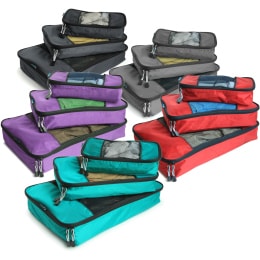
Packing Cubes
One last piece of advice if you are a more organized person than I am. Try to put your different types of clothing in Ziploc bags or in little square bags called Packing Cubes. You can find the best packing cubes on Amazon here, eBay here or REI here.
It’s a good way to keep everything organized in kits of shirt, socks, toiletries objects and so on. Besides, if it’s raining and you do not have an external rain cover for your backpack, your clothes won’t get soaked.
If you want to know more, this article about packing cubes has everything you need to know.
Well, that’s it! I hope that I have helped. As I mentioned, although the way you pack your bag is a personal preference, it’s good to have a list so you don’t forget anything. I’m also not going to pretend that I know anything about the hell (according to my girlfriend) that is packing for girls, so she’ll be writing an article just for them in the future.
Let me know if you have any other advice about preparing your bag. I’m available for any questions you might have about this page, packing, and travel in general. Just use the area for comments below. Don’t worry, if you are afraid to ask a question or worry that I might spam you, you can post anonymously without your email address.
New Addition: In a comment in our Brazilian Portuguese page, our reader Cristiene suggested plastic bags that compress clothes in case you have any thick clothing or just want everything to fit in your luggage. To buy, just go to this eBay link here. Thanks for the tip, Cristiene!
Happy travels!!
Planning your next trip?

Already reserved your hotel or hostel? If not, our article with The 6 Best and Cheapest Websites to Find & Reserve Accommodation can help you out. You’ll also find some promotions and discount codes.
Still haven’t booked your plane ticket and want to save big? Take a look at our page with 16 Tips to Save on Flights where you’ll also find the 4 best websites to buy your plane tickets.
And finally, will you need to rent a car during your trip? Then surely our page with The 5 Best and Cheapest Websites to Compare and Rent Cars Around the World will help you choose the best rental car and find a good deal.

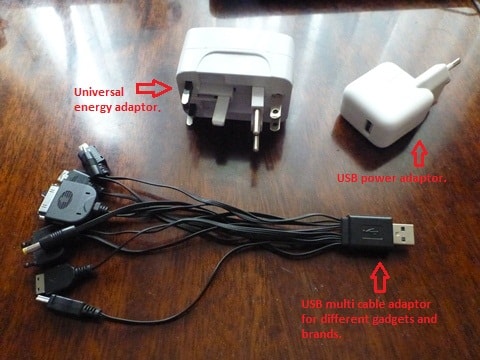 Universal adaptor.
Universal adaptor.
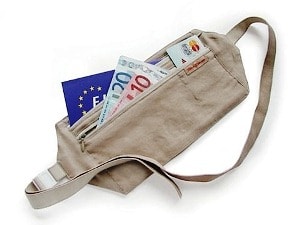

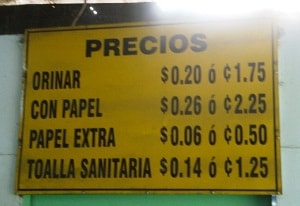

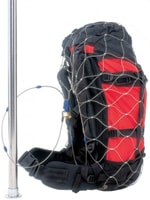
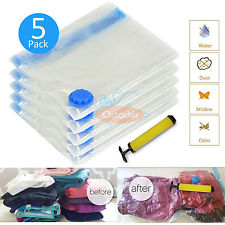



 8LvG4w56H8xI6oS3MDSK2mZ1enEH_ABlpTx5jAsYdFQ
8LvG4w56H8xI6oS3MDSK2mZ1enEH_ABlpTx5jAsYdFQ
Thanks for mentioning sunscreen 3 times. Humorous and helpful!
Hahaha, thanks! I got this idea from that famous “Wear Sunscreen” speech. And I use it myself EVERYDAY! 🙂
This is some great step and tips all the article is very informative.
Hi Elliana! Thank you so much for your comment and nice words. Glad to know the article was helpful. Please let me know if you have any questions! 🙂
[…] PACK YOUR BACKPACK […]
[…] PACK YOUR BACKPACK […]
[…] PACK YOUR BACKPACK […]